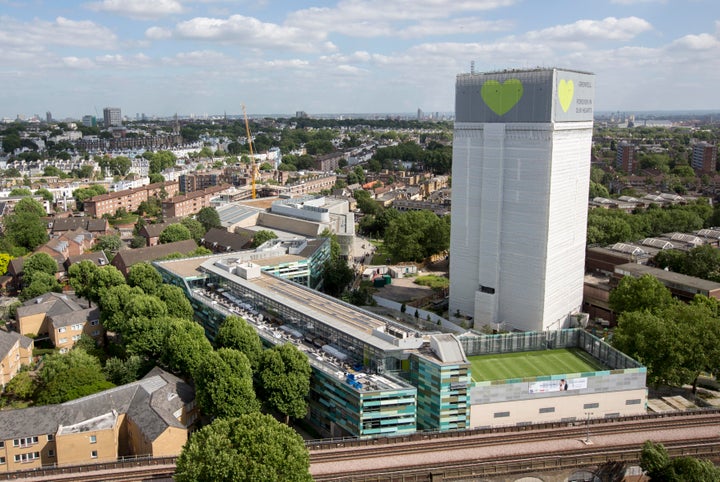
Once again the Grenfell community and local groups expressed concerns.
Once again they were ignored. And once again they were right.
‘Stop killing us’ was written on one of the placards outside Kensington
Town Hall on Wednesday 17 October, as angry and frustrated residents
gathered to protest about the latest scandal to hit RBKC council.
In the days and months after the atrocity of the Grenfell Tower fire, near
residents and local environmental campaigners regularly expressed
concerns about the dangers of air pollution, and of toxic residue from
smoke and other emissions from the fire.
They knew there would be asbestos. They quickly found out that there
was cyanide in the insulation material. Many of the deceased had actually
died from cyanide poisoning, and some survivors had been treated
specifically for that condition.
They demanded ground level and soil testing from the earliest days.
However, the response from the authorities was that the ‘plume’ had
dissipated into the atmosphere.
No one believed that. Rescue centres had regularly run out of face masks
donated by local businesses, worn to give some protection from the foul
air at ground level which was causing severe respiratory problems. And
surely, if we can be affected by aeronautical emissions, toxins from the
Tower ‘plume’ were not going to disappear. Given the very still weather
conditions at the time, many believed that toxic emissions and particles of
all kinds would simply drift right back down to the ground.
The early advice from Public Health England (PHE) in response to these
concerns was ‘wash your veg, wash your hands, if you’re ill see your
Doctor’. Given that some of these particulates are so tiny that they are
absorbed directly into the skin and straight into the bloodstream, this was
pretty poor advice and residents knew that.
PHE did eventually set up air quality monitoring spots around the area
including at the site of Kensington Aldridge Academy (KAA), which is right
next door to the Tower. But there was no word on soil contamination -
until last week.
Prof Anna Stec is a specialist in fire chemistry and toxicology at University
of Central Lancashire. She is an expert witness at the Grenfell Inquiry.
In February, she wrote to express concerns to PHE, local police, the NHS and
the council about potential toxic soil in the Grenfell area, and that testing
should be carried out before residents returned to the area. However, at
the council meeting on 17th, the leader of the council publicly denied
she had ever received this warning.
Last week, Prof Stec released her interim findings on analysis of soil
samples around Grenfell. She had, as predicted, found evidence for ‘huge
concentrations’ of polycyclic aromatic hydrocarbons (PAH), which are
potentially carcinogenic, and are absorbed through the skin. She also
found high levels of hydrogen cyanide, as residents had feared from the
outset.
PHE – who have offered to meet me to discuss these issues – are
contacting Prof Stec to ask for sight of her early findings. I have already
met with senior members of our local NHS CCG, who also want to see the
early findings, and I’m awaiting an appointment to meet the
Parliamentary Under Secretary of State for Public Health.
Meanwhile the Chief Executive of RBKC council berated the author of the
research for ‘refusing to publish her findings in a peer-reviewed journal’, while insisting that any contaminants could be due to ‘historic use of coal
fires’ – a ridiculous and insulting assumption to those who are seriously
concerned.
As residents pointed out so effectively at the council meeting, none of
those who have mastered delivering reassuring platitudes actually live in
the area. A majority of the senior councillors live in Chelsea, and nearly
all of the senior officers live outside the borough, if not outside London.
Meanwhile, those who are affected, who live and/or work in the
immediate area, or indeed the mile radius of the study to date, are living
in constant anxiety.
So we are, once again, in a situation where ‘the authorities’ – government, the NHS, PHE, and RBKC council – are playing pass the parcel with accountability, while local people are scared.
Within the radius so far tested by Prof Stec are a dozen primary schools,
countless nurseries, and four secondary schools. Some of these are
private, and others state-funded. All of them will have outside space, or
access to outside space.
The council has set the dial on the £4m media comms team to ‘maximum
platitude’ level. Their default position, as ever, is to manage bad news
rather than address it. So it’s business as usual at the Grenfell Council.
